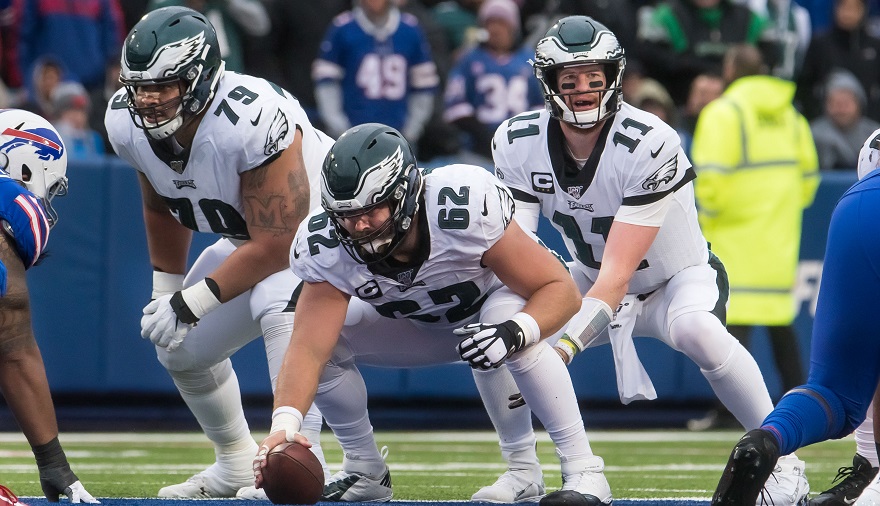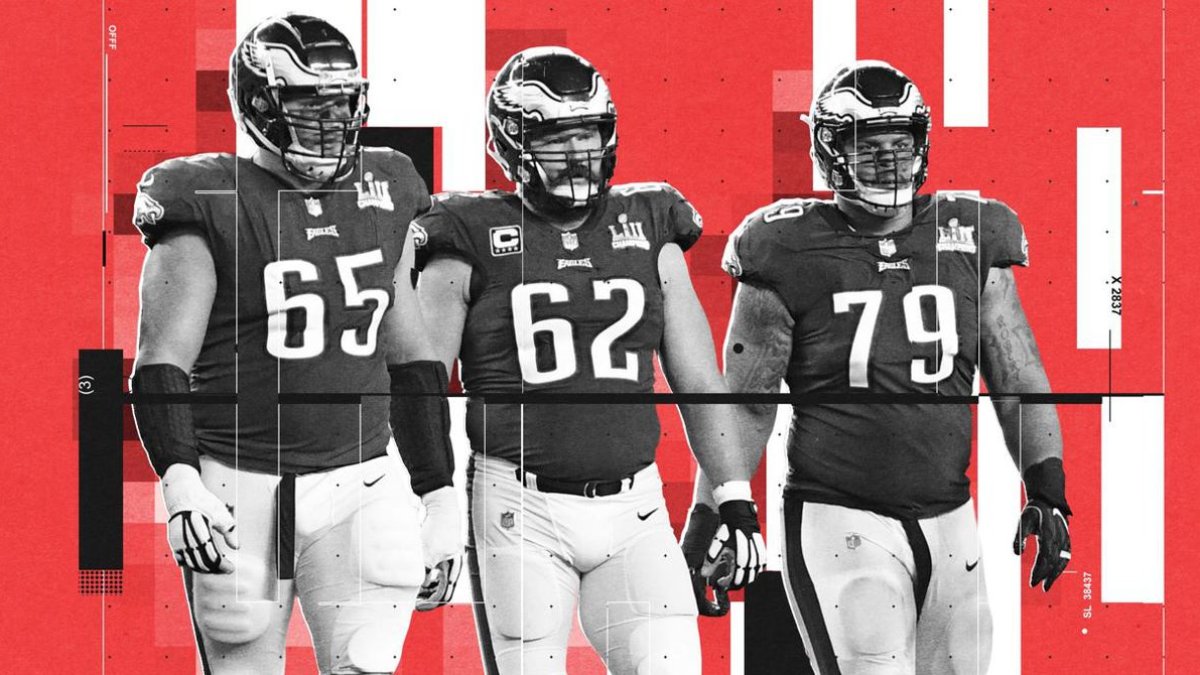Most seasons there is a clear best offensive line in football, but this year the race was far tighter than usual, complicated by injuries across most of the leading contenders. In the end, the Philadelphia Eagles become the first two-time winner of PFF’s Offensive Line of the Year Award.
The Eagles dealt with some injuries to the line this year, with nine players seeing game time and eight seeing significant snaps throughout the year. None were disastrous, or even poor, and their star players were among the best in the NFL once again which helped the overall unit’s grade despite those injuries.
Brandon Brooks was the star performer at right guard. Brooks came back from a torn Achilles to not just maintain a high level of play, but actually put up a career year, earning an overall PFF grade of 92.9 and winning our Matthews Award for the best single lineman in the league. Brooks was a force in the run game, where he had the second-best number of positively graded blocks of any lineman in the game. He was beaten for just one sack all season and missed out on the chance to improve his grade even further when he got injured and forced to miss the team’s Wild Card appearance.
At right tackle, Lane Johnson was once again among the best in the league in a strong season for right tackle play, but he missed some time, playing in just 12 games. Over those games, he surrendered just one sack, and had a run-blocking grade of 92.6, the best mark of any lineman at any position this season. The Eagles were a notably different unit up front when Johnson was playing. Though Halapoulivaati Vaitai performed reasonably well in relief — earning an overall PFF grade of 74.4 for the season — that’s some way shy of being one of the best tackles in football and was a significant blow to the line.

In something of a down year for center play leaguewide, Jason Kelce was again the best-graded player at his position in the NFL. Kelce’s athleticism and blocking ability on the move separates him from other centers and his skill in this area is vital to the Philadelphia run game. Kelce was the only member of the line to play 100% of the team’s snaps on offense, including in their lone playoff game.
Left guard has seen the biggest weakness on the Eagles line over the past several seasons, and while that was still probably the case this year, it was far from a problem. Isaac Seumalo played all but one snap over the season and finished the year with a PFF grade above 70.0 including the playoffs. He surrendered five sacks, but four of them came in two games against top-end opposition and he didn’t allow any for the final eight games he took the field.
At left tackle, Jason Peters somehow maintained his high-end play despite now being 38 years old. Peters’ play remains consistently strong, but the biggest issue he has is injuries starting to take their toll. He has missed time in each of the past three seasons and was out for three games this year. If Peters was able to stay healthy for the entirety of the season he would still be one of the very best tackles in football, regardless of his age, but even knowing he will likely miss some time he is a big part of this unit’s success.
The other team with the strongest case for the best offensive line of the year were the Baltimore Ravens, who had the best pass blocking tackle in football in the form of Ronnie Stanley and even more impressive production numbers as an offense. Baltimore’s O-line benefited significantly from Lamar Jackson and the bespoke offense the Ravens run, however, putting them in advantageous situations in both the run game and from a pass protection standpoint. Because of that, the Eagles just topped them in grades and are worthy winners of this year’s Offensive Line of the Year.



 © 2025 PFF - all rights reserved.
© 2025 PFF - all rights reserved.